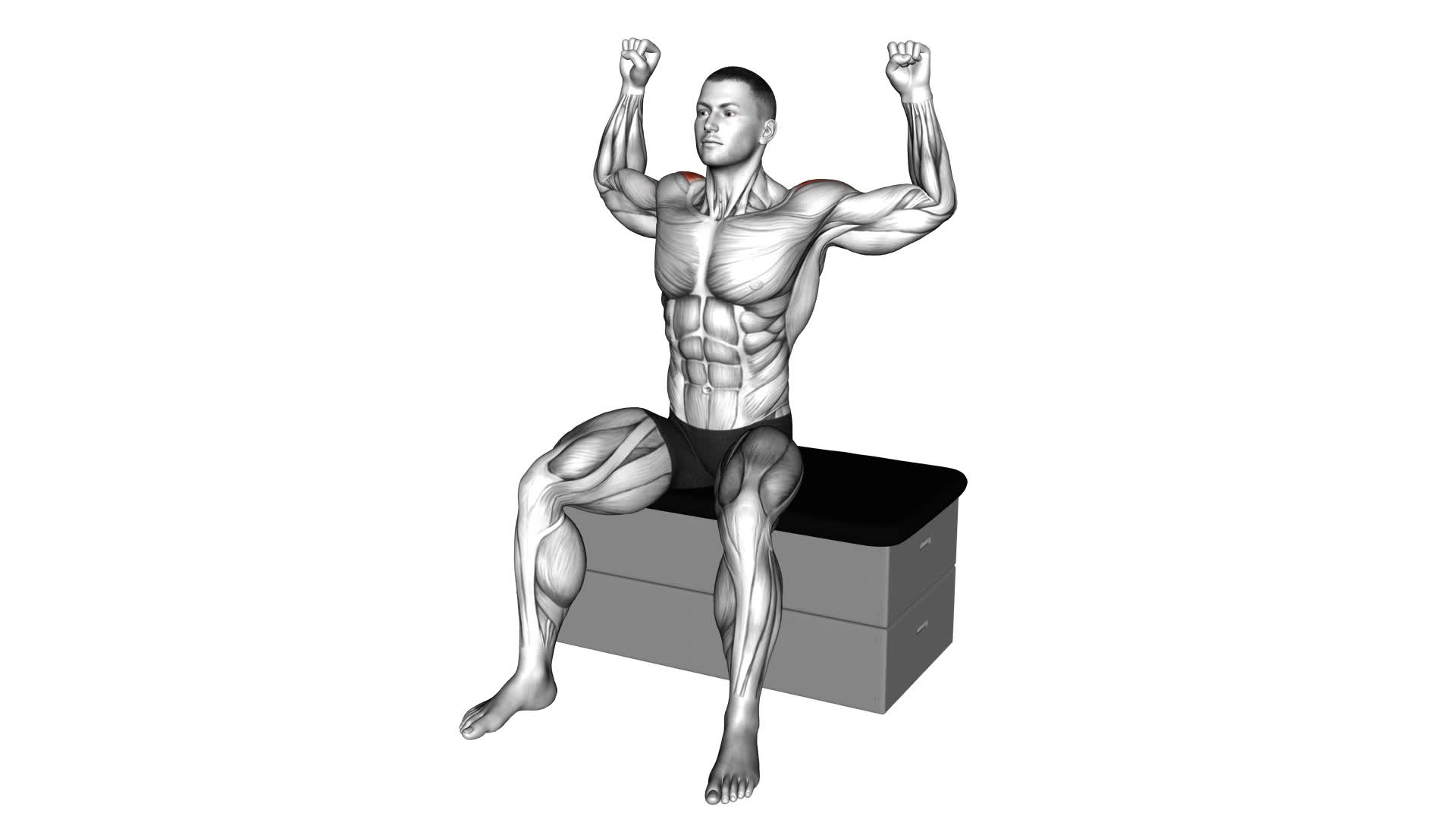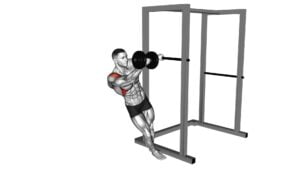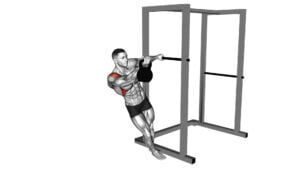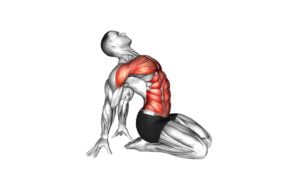Seated Learning Back Stretch – Video Exercise Guide & Tips

Looking to improve your flexibility and relieve tension in your back? The seated learning back stretch is a fantastic exercise that can help you achieve just that.
Watch This Exercise Video
In this video exercise guide, you'll learn the proper form and technique for the stretch, as well as modifications for beginners and advanced practitioners.
Discover tips for maximizing its effectiveness and common mistakes to avoid.
Incorporate the seated back stretch into your fitness routine for a healthier and more flexible back.
Key Takeaways
- Improved flexibility in the back muscles
- Alleviation of lower back pain
- Increased range of motion in the lower back
- Enhanced flexibility for daily activities and other exercises
Benefits of the Seated Learning Back Stretch
By practicing the Seated Learning Back Stretch, you can experience improved flexibility and reduced tension in your back muscles. This exercise specifically targets the muscles in your lower back, which are often prone to tightness and discomfort. The Seated Learning Back Stretch helps to elongate these muscles and increase their range of motion, leading to improved flexibility.
One of the main benefits of this stretch is its ability to reduce lower back pain. The gentle stretching of the muscles in your lower back helps to alleviate any tightness or stiffness that may be causing discomfort. By regularly incorporating this stretch into your routine, you can effectively relieve tension in your back and minimize the occurrence of lower back pain.
Additionally, this stretch can also improve your overall flexibility. As you consistently practice the Seated Learning Back Stretch, you'll notice an increase in your ability to bend and move your back without strain. This improved flexibility isn't only beneficial for daily activities but also for other exercises and physical activities that require a flexible back.
Proper Form and Technique for the Stretch
To perform the Seated Learning Back Stretch with proper form and technique, you should:
- Sit on the edge of a chair with your feet flat on the ground.
- Make sure your back is straight and your shoulders are relaxed.
- Place your hands on your thighs or hold onto the sides of the chair for support.
- Take a deep breath in, and as you exhale, slowly lean forward from your hips, keeping your back straight.
- Feel the stretch in your lower back and the back of your thighs.
- Hold this position for 15 to 30 seconds, focusing on your breathing.
- Inhale deeply, and as you exhale, slowly return to the starting position.
- Repeat this stretch 2 to 3 times.
To modify the stretch, you can:
- Place a cushion or pillow on your lap to support your upper body.
- This can help alleviate any discomfort or strain on your lower back.
- Additionally, if you have flexibility limitations, you can perform the stretch while seated on a stability ball instead of a chair.
- This will provide more support and allow you to control the intensity of the stretch.
Remember to maintain proper breathing techniques throughout the stretch:
- Take slow, deep breaths.
- Inhale through your nose and exhale through your mouth.
- This will help relax your muscles and increase the effectiveness of the stretch.
Modifications for Beginners and Advanced Practitioners
If you're a beginner or an advanced practitioner, you can modify the Seated Learning Back Stretch to suit your level of flexibility and comfort.
For beginners, it's important to start slowly and gradually increase the intensity of the stretch over time. To modify the stretch, you can begin by sitting on a folded towel or cushion to elevate your hips and make it easier to reach your toes. This will help to reduce strain on the lower back. Additionally, you can bend your knees slightly to decrease the intensity of the stretch. As you become more comfortable and flexible, you can gradually straighten your legs and reach for your toes without the aid of a cushion.
For advanced practitioners who are looking for a deeper stretch, there are a few modifications that can be made. One option is to use a yoga strap or towel to help increase the reach and intensity of the stretch. Simply loop the strap around your feet and hold onto the ends, gently pulling yourself forward to deepen the stretch. Another modification is to extend one leg out to the side while keeping the other leg bent. This will target different muscles in the back and provide a more challenging stretch.
Remember to listen to your body and only go as far as is comfortable for you. With time and practice, you'll gradually increase your flexibility and be able to perform the Seated Learning Back Stretch with ease.
Tips for Maximizing the Effectiveness of the Stretch
To maximize the effectiveness of the Seated Learning Back Stretch, focus on maintaining proper form and breathing technique throughout the exercise. This will help you achieve the desired results of maximizing flexibility and improving spinal health.
Firstly, ensure that you sit up straight with your feet flat on the floor and your back against the chair. Keep your shoulders relaxed and your neck aligned with your spine.
As you begin the stretch, inhale deeply through your nose, filling your lungs with air. As you exhale, slowly and gently lean forward from your hips, allowing your upper body to naturally fold forward. Remember to keep your back straight and avoid rounding your shoulders.
As you hold the stretch, continue to breathe deeply, inhaling and exhaling slowly and rhythmically. This will help to oxygenate your muscles and promote relaxation.
To enhance the effectiveness of the stretch, you can also try visualizing your spine lengthening and your muscles elongating.
Common Mistakes to Avoid During the Seated Back Stretch
To ensure you get the most out of your seated back stretch, it's important to maintain proper posture throughout the exercise. Keep your spine straight, shoulders relaxed, and avoid slouching or hunching forward.
Additionally, focus on your breathing, inhaling deeply as you stretch and exhaling slowly to promote relaxation.
Regular stretching not only helps to alleviate tension in the back, but also improves flexibility and promotes overall well-being.
Proper Posture Tips
You can avoid common mistakes during the seated back stretch by maintaining proper posture. Proper posture is essential for improving spinal alignment and preventing strain on your back.
To ensure you have the correct posture during the seated back stretch, follow these tips:
- Sit up straight: Maintain an upright position with your shoulders relaxed and your spine aligned.
- Keep your feet flat on the ground: Avoid crossing your legs or tucking them under your chair. Keep your feet firmly planted on the floor to provide a stable base.
- Support your lower back: Place a lumbar support cushion or rolled-up towel at the curve of your lower back to maintain its natural arch and provide additional support.
Breathing Techniques for Relaxation
Take deep breaths to promote relaxation while performing the seated back stretch. Breathing exercises are essential for maximizing the benefits of this stretch and creating a sense of calm.
As you inhale deeply, focus on expanding your diaphragm and filling your lungs with air. This allows for increased oxygen flow to your muscles and promotes a sense of relaxation.
Mindfulness techniques can also be incorporated during this stretch by directing your attention to your breath. Pay close attention to the sensation of your breath entering and leaving your body.
Avoid common mistakes such as shallow breathing or holding your breath, as this can hinder relaxation and limit the effectiveness of the stretch.
Benefits of Regular Stretching
By incorporating proper breathing techniques and mindfulness, you can enhance the benefits of regular stretching while avoiding common mistakes during the seated back stretch.
Regular stretching not only helps improve flexibility but also reduces muscle tension. Here are three key benefits of regular stretching:
- Increased Flexibility: Stretching regularly helps lengthen and loosen your muscles, allowing for a greater range of motion. This can be particularly beneficial for activities that require flexibility, such as sports or dancing.
- Improved Posture: Regular stretching can help correct imbalances in muscle tightness, leading to improved posture. Stretching the back muscles, in particular, can help alleviate tension and promote a more upright posture.
- Reduced Muscle Tension: Stretching helps relax tight muscles and release built-up tension. This can provide relief from muscle soreness and stiffness, as well as reduce the risk of muscle strains and injuries.
Remember to always warm up your muscles before stretching and avoid bouncing or overstretching, as these can lead to injury.
Incorporating the Seated Back Stretch Into Your Fitness Routine
To enhance your fitness routine, incorporate the seated back stretch as a regular exercise. Stretching is an essential component of any fitness routine as it helps improve flexibility, increase range of motion, and prevent injuries. The seated back stretch specifically targets the muscles in your back, promoting better posture and relieving tension in the upper body.
To make the seated back stretch more accessible, you can modify the exercise by using props such as a yoga strap or towel. Sit on the edge of a chair with your feet flat on the ground and your back straight. Extend your arms forward and interlace your fingers, palms facing away from you. Inhale deeply and as you exhale, slowly raise your arms overhead, keeping them shoulder-width apart. Gently lean forward, allowing your upper body to stretch and your head to drop between your arms. Hold this position for 30 seconds, focusing on breathing deeply and relaxing your back muscles.
Incorporating stretching into your daily routine can have numerous benefits. Aside from improving flexibility and preventing injuries, regular stretching can help alleviate muscle soreness, reduce stress, and improve circulation. It's recommended to stretch at least three times a week, but if you have a sedentary lifestyle, it's advisable to incorporate stretching into your routine every day.
Remember to always listen to your body and never push yourself beyond your limits. If you experience any pain or discomfort during the seated back stretch, stop immediately and consult with a healthcare professional.
Frequently Asked Questions
How Long Should I Hold the Seated Learning Back Stretch?
To get the most out of the seated learning back stretch, it's important to hold the position for an appropriate duration.
The length of time you should hold the stretch depends on your comfort level and flexibility. Holding the stretch for at least 20-30 seconds allows your muscles to relax and lengthen.
However, if you're looking for deeper stretches and increased flexibility, you can gradually increase the duration to 1-2 minutes.
Remember to listen to your body and make modifications as needed for a safe and effective stretch.
Can I Do the Seated Learning Back Stretch if I Have a Back Injury?
If you have a back injury, it's important to take proper precautions when doing the seated learning back stretch.
Before attempting this exercise, consult with a healthcare professional to determine if it's safe for you. They may recommend modifications or alternative exercises to protect your back.
It's crucial to prioritize your safety and avoid exacerbating your injury. Always listen to your body and stop immediately if you experience any pain or discomfort.
Are There Any Variations of the Seated Learning Back Stretch for Pregnant Women?
During pregnancy, it's important to make modifications to exercises to ensure your safety and the well-being of your baby.
The seated learning back stretch can be modified for pregnant women by using a wider stance and placing a pillow or bolster behind your back for added support. This variation helps to alleviate lower back pain and improve posture, which are common concerns during pregnancy.
It also promotes relaxation and flexibility in the back muscles.
Can the Seated Learning Back Stretch Help Alleviate Lower Back Pain?
The seated learning back stretch can indeed help alleviate lower back pain. By incorporating stretching into your daily routine, you can improve flexibility and strengthen the muscles in your back. This stretch specifically targets the lower back, providing relief and reducing discomfort.
In addition to the seated learning back stretch, there are other exercises that can also help alleviate lower back pain, such as pelvic tilts, cat-cow stretches, and hamstring stretches. Incorporating a combination of these exercises into your routine can provide even greater benefits.
Is It Necessary to Warm up Before Performing the Seated Learning Back Stretch?
Before performing the seated learning back stretch, it's important for you to warm up your body. Warming up before exercise has several benefits, including increasing blood flow to your muscles, improving flexibility, and reducing the risk of injury.
Additionally, it's crucial to maintain proper form during the seated learning back stretch to ensure maximum effectiveness and prevent strain on your lower back.
Conclusion
In conclusion, the seated learning back stretch is a highly effective exercise for improving flexibility and relieving tension in the back.
By maintaining proper form and technique, individuals can maximize the benefits of this stretch.
Whether you're a beginner or an advanced practitioner, modifications can be made to suit your fitness level.
It's important to avoid common mistakes and incorporate this stretch into your fitness routine for optimal results.

Author
Years ago, the spark of my life’s passion ignited in my mind the moment I stepped into the local gym for the first time. The inaugural bead of perspiration, the initial endeavor, the very first surge of endorphins, and a sense of pride that washed over me post-workout marked the beginning of my deep-seated interest in strength sports, fitness, and sports nutrition. This very curiosity blossomed rapidly into a profound fascination, propelling me to earn a Master’s degree in Physical Education from the Academy of Physical Education in Krakow, followed by a Sports Manager diploma from the Jagiellonian University. My journey of growth led me to gain more specialized qualifications, such as being a certified personal trainer with a focus on sports dietetics, a lifeguard, and an instructor for wellness and corrective gymnastics. Theoretical knowledge paired seamlessly with practical experience, reinforcing my belief that the transformation of individuals under my guidance was also a reflection of my personal growth. This belief holds true even today. Each day, I strive to push the boundaries and explore new realms. These realms gently elevate me to greater heights. The unique combination of passion for my field and the continuous quest for growth fuels my drive to break new ground.







